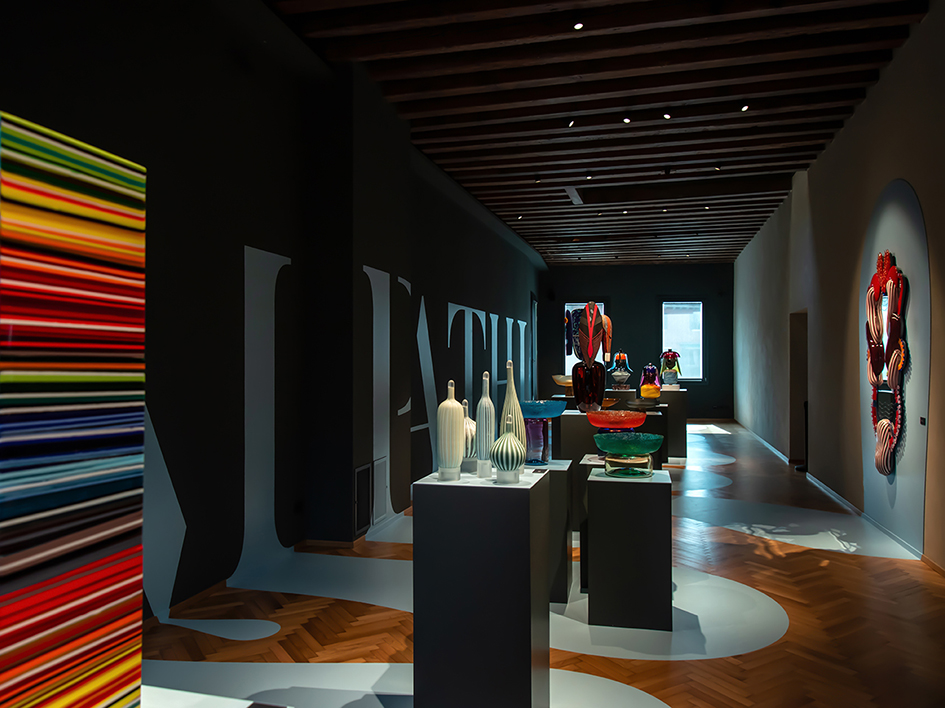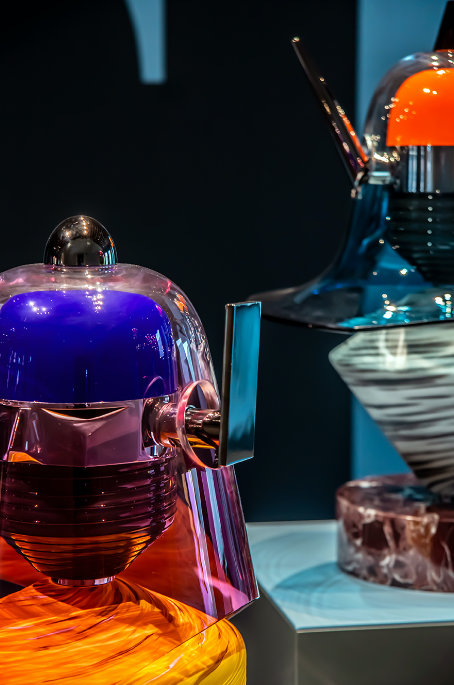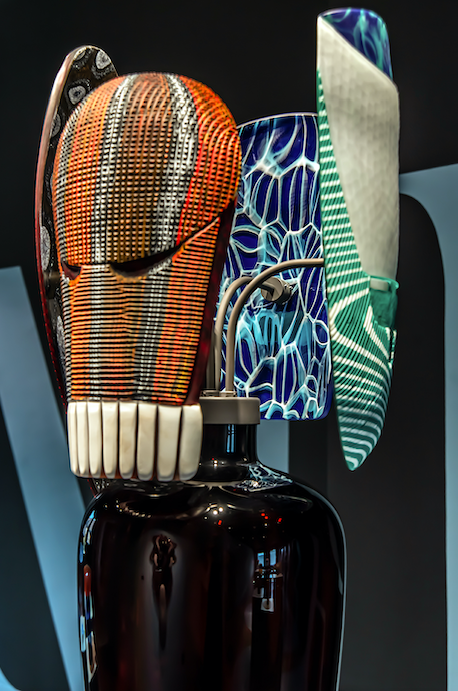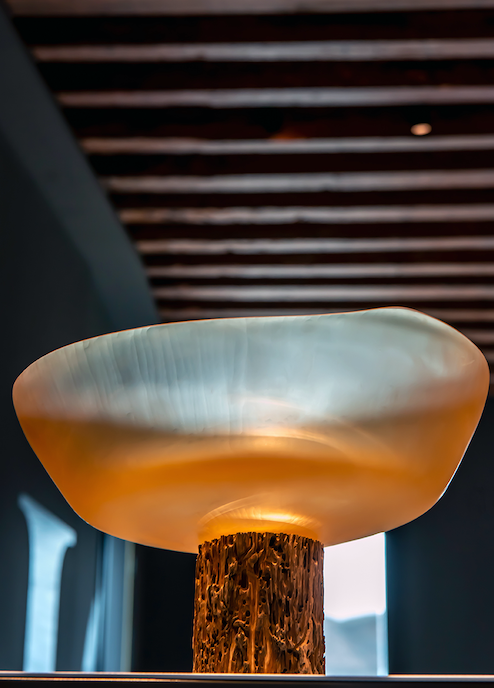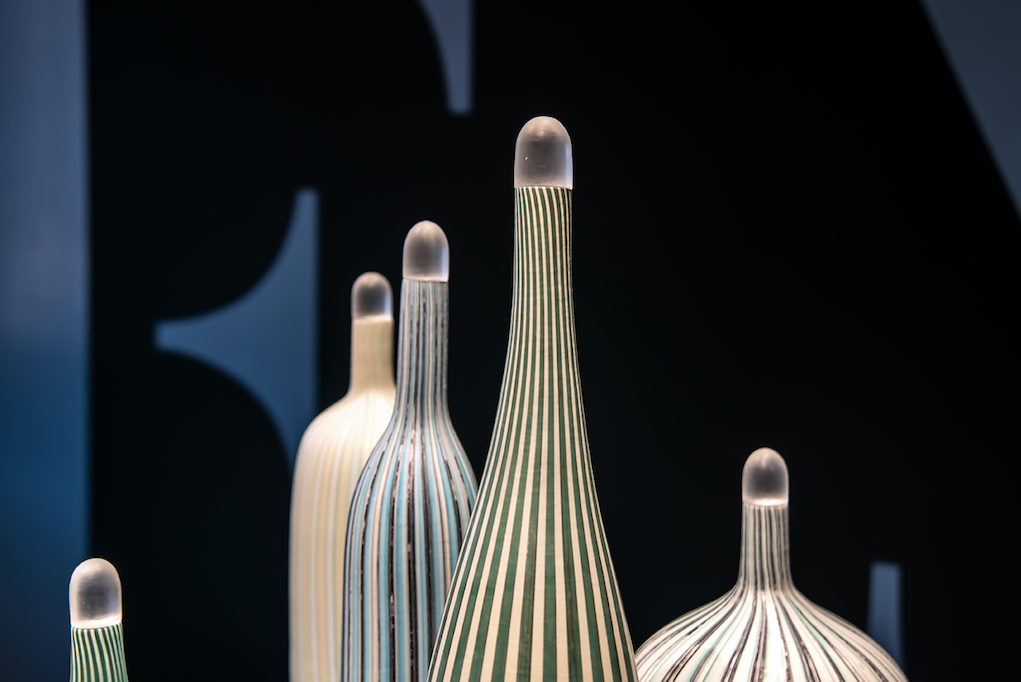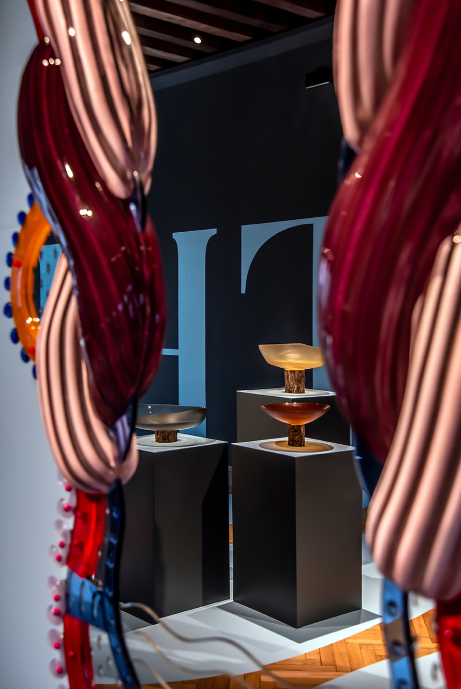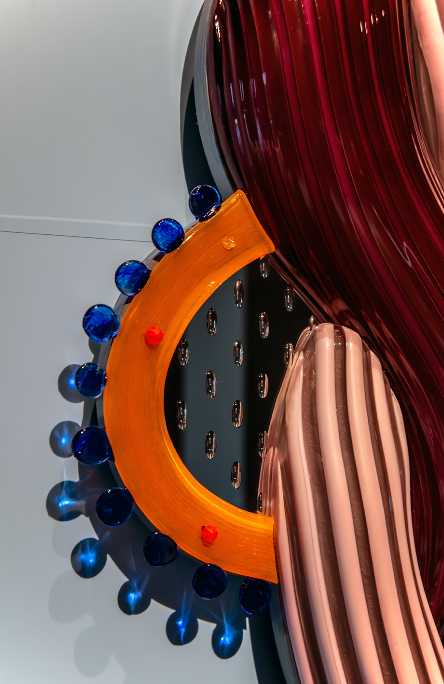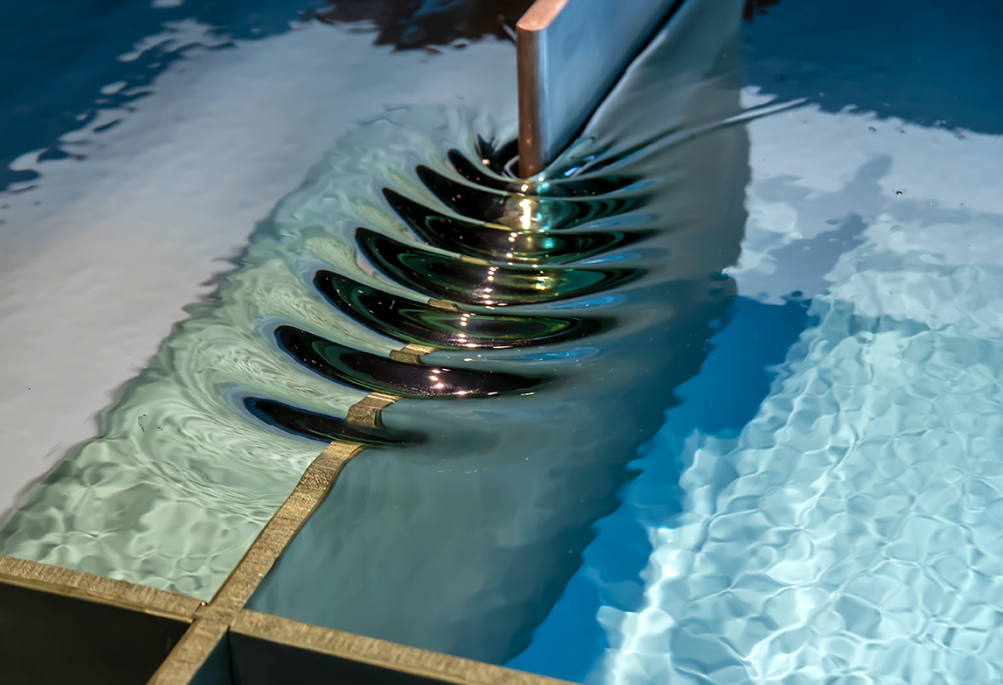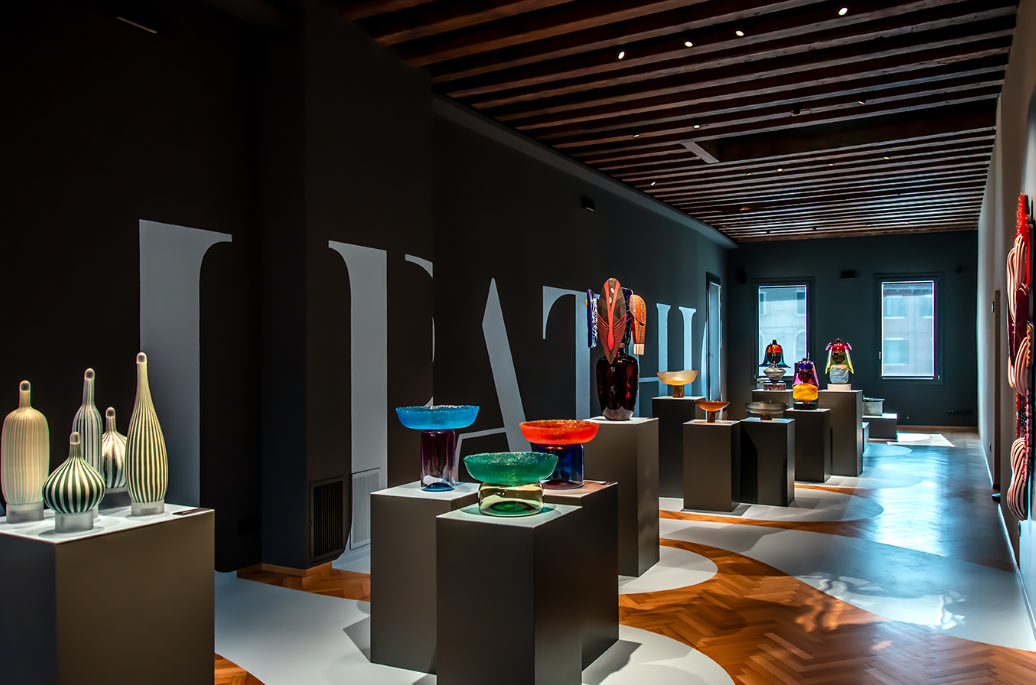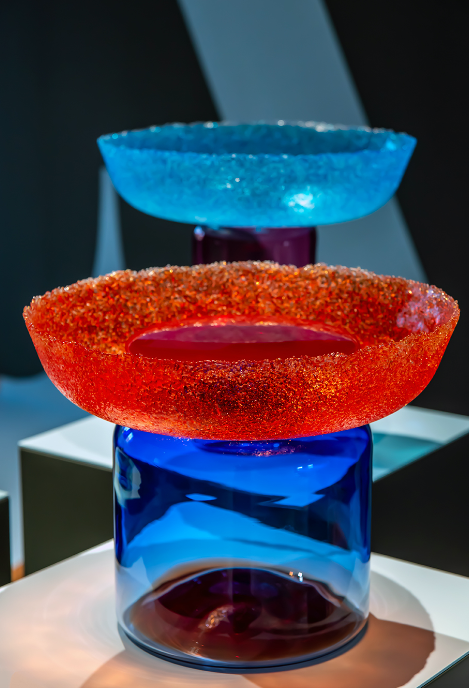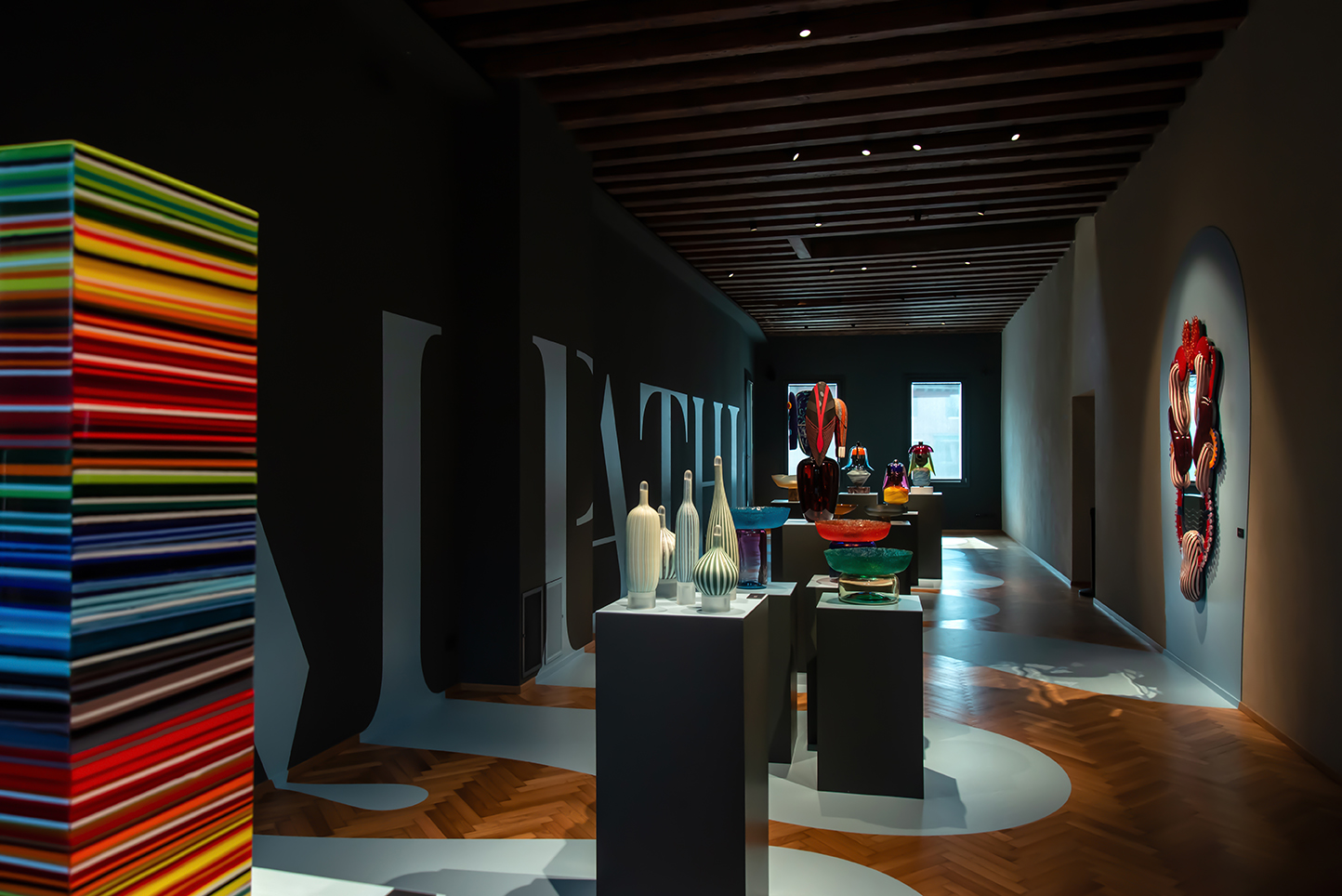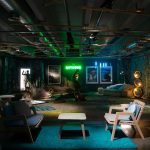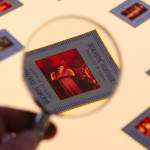english below
Empathic. Discovering a Glass Legacy è il primo progetto interamente prodotto da InGalleria, l’Art Gallery di Punta Conterie, un luogo quest’ultimo in cui si incrociano diverse attività — culturali, enogastronomiche ma non solo — con l’obiettivo di offrire un’esperienza completa, emozionale, sensoriale, empatica per parafrasare il titolo del progetto in mostra nelle sale espositive dell’hub fino ad aprile 2022.
Un luogo — dettaglio nodale per recepire il progetto nella giusta angolatura — nato da un’idea di riqualificazione e rigenerazione urbana di una porzione delle ex Conterie di Murano per mano di due imprenditori, Alessandro Vecchiato e Dario Campa. Il tutto in un momento storico cruciale per l’isola.
Ne parliamo con Alessandro Vecchiato, imprenditore con un passato nel mondo del lighting design con l’azienda Foscarini, oggi anima artistica dell’hub.

Ci vogliono coraggio e visione nell’investire in un progetto come quello di Punta Conterie, ancora di più nella produzione totale di una mostra di installazioni e pezzi in edizione limitata in vetro di Murano. Come è nata l’idea di Empathic. Discovering a Glass Legacy?
AV — È nata in maniera molto spontanea parlando con Luca Nichetto. Ad entrambi interessava ideare e realizzare una mostra e vedere che cosa sarebbe successo se tutti ci fossimo messi in gioco sperimentando, scompaginando la grammatica delle forme, delle tecniche, dell’ingegno di ciascuno per giungere a risultati inediti.
interessava ideare e realizzare una mostra e vedere che cosa sarebbe successo se tutti ci fossimo messi in gioco sperimentando, scompaginando la grammatica delle forme, delle tecniche, dell’ingegno di ciascuno per giungere a risultati inediti.
- Mecha by Luca Nichetto, ph. Valentina Cunja
Nel ruolo di curatore della mostra hai chiamato Luca Nichetto, designer muranese che il vetro ce l’ha nel DNA. Immagino però ci fosse di più oltre a questa motivazione, vero?
AV — Con Luca ho un lungo rapporto di lavoro che va dal mondo delle lampade al mondo del vetro di Murano. In questo specifico caso avevamo la stessa idea: mettere assieme una squadra di designer stimolando ogni autore a immaginare delle opere che richiedessero processi produttivi diversi (e talvolta nuovi), che mettessero alla prova le capacità artigianali dei maestri, che in qualche modo sfidassero la tradizione e le competenze acquisite.
- Africa by Ini Archibong, ph. Valentina Cunja
I pezzi in mostra sono stati realizzati con la collaborazione di una quindicina di attviita’ di Murano. Un progetto corale che ha dimostrato le capacità produttive di questa piccola isola grande nel mondo.
Prima di tutto, quanto vi siete divertiti?
AV — Di sicuro ci siamo divertiti! Quando si fa ricerca ci si diverte sempre ma allo stesso tempo sono state tante le difficoltà. Il periodo di preparazione della mostra è coinciso con la pandemia e questo ha naturalmente complicato molto l’intero processo produttivo.
- Palafit by Gamfratesi, ph. Valentina Cunja
L’impossibilità di instaurare un dialogo diretto e vicino tra gli autori e le fornaci ha reso il lavoro molto complesso ma, grazie all’entusiasmo dei designer e a tutte le aziende coinvolte, siamo riusciti a portare a termine l’impresa.
In mostra ci sono pezzi che hanno stimolato il recupero di tecniche quasi dimenticate come nel caso de La Famiglia di Marc Thorpe e altri che hanno spinto la ricerca e sperimentazione al limiti estremi.
In mostra ci sono pezzi che hanno stimolato il recupero di tecniche quasi dimenticate come nel caso de La Famiglia di Marc Thorpe e altri che hanno spinto la ricerca e sperimentazione al limiti estremi.
- La Famiglia by Marc Thorpe, ph. Valentina Cunja
Credi che quest’esperienza abbia smosso qualcosa nelle fornaci, abbia innescato una nuova voglia di fare ricerca, sperimentazione, di innovare?
AV — Lo spero, questo è uno degli obbiettivi della mostra.
Credo che questa esperienza possa — per le aziende dell’isola — essere uno stimolo ad aprirsi sempre di più al mondo di artisti, maestranze esterne e committenti in grado di portare idee nuove e stimolare il desiderio di provare tecniche diverse o ancora di ritrovare pienamente l’uso di pratiche passate che stanno scomparendo.
- Palafit by Gamfratesi through Medusa by Elena Salmistraro, ph. Valentina Cunja
L’entusiasmo che ci ha guidato nella sfida di portare “in isola” otto designer internazionali ha trovato risonanza nel cimento delle aziende e dei maestri che hanno risposto alle sollecitazioni, premiando ogni sforzo e testimoniando la possibilità di immaginare ancora Murano quale polo imprescindibile dell’arte vetraria nel mondo.
Credo che questa esperienza possa — per le aziende dell’isola — essere uno stimolo ad aprirsi sempre di più al mondo di artisti, maestranze esterne e committenti in grado di portare idee nuove e stimolare il desiderio di provare tecniche diverse o ancora di ritrovare pienamente l’uso di pratiche passate che stanno scomparendo.
- Medusa by Elena Salmistraro, ph. Valentina Cunja
Spesso in questo journal — a dire il vero spesso abbiamo provato a farlo diventare un appuntamento fisso ma il tempo è sempre tiranno — abbiamo parlato di vetro. Non solo di Murano. Quello che critichiamo sempre è la mancanza di un’adeguata cultura del vetro che permetta di recepirlo nella giusta maniera, capirne le difficoltà di realizzazione, i tempi, i costi. Almeno in Italia.
Cosa manca a Murano e nel nostro paese rispetto ai grandi centri internazionali del vetro?
AV — La capacità di aprirsi al mondo esterno e la capacità di favorire il passaggio dei saperi — ad eccezione di alcuni casi di maestri che hanno autonomamente coltivato un proprio allievo elettivo — due fattori che ad oggi non sono avvenuti. Inoltre manca senza dubbio una scuola per maestri vetrai che ancora non c’è, capace di insegnare la teoria ma soprattutto tanta, tantissima pratica in uno scambio costante di idee e sperimentazione con l’esterno.
Inoltre manca senza dubbio una scuola per maestri vetrai che ancora non c’è, capace di insegnare la teoria ma soprattutto tanta, tantissima pratica in uno scambio costante di idee e sperimentazione con l’esterno.
- Madonna del Monte by Noé Duchaufour-Lawrance, ph. Valentina Cunja
Dopo Murano, dove vedremo Empathic?
AV — La rivedremo in gallerie che si occupano di arte e di vetro negli USA e in Europa e speriamo anche nei paesi orientali. Ci piace molto l’idea di amplificare la visibilità di questo progetto così ricco di creatività, tecnica, visione… è una sorta di compendio, inventario delle antiche tecniche di lavorazione del vetro di Murano.
- Empathic. Discovering a Glass Legacy, ph. Valentina Cunja
E dopo Empathic, cosa vedremo a Punta Conterie?
AV — Una mostra che avrà le stesse caratteristiche di Empathic ma con l’aggiunta di una sezione storica che consenta di recepire l’evoluzione del tema proposto. A differenza di Empathic — dove i designer sono stati lasciati liberi di creare senza brief — il prossimo progetto si concentrerà su un prodotto specifico, ma anche in questo caso non mancheranno la ricerca, la sperimentazione, la libera creatività!
A differenza di Empathic, il prossimo progetto si concentrerà su un prodotto specifico, ma anche in questo caso non mancheranno la ricerca, la sperimentazione, la libera creatività!
- Granule by Benjamin Hubert, ph. Valentina Cunja
Molto più in generale, come vedi il futuro di Murano?
L’isola è destinata a mutare pelle — come spesso hai affermato — da centro produttivo a centro ricettivo?
AV — Come detto sopra le aziende devono continuare a produrre in un continuo scambio con il mondo esterno per innovare e innovarsi.
Come detto sopra le aziende devono continuare a produrre in un continuo scambio con il mondo esterno per innovare e innovarsi.
Questo naturalmente non ha nulla a che fare con la tradizione che va tutelata, è il patrimonio sul quale costruire il futuro, ma con la necessità di stare al passo con i tempi cogliendo le favolose opportunità che gli scambi ci offrono. Viviamo in un mondo interconnesso, sarebbe un peccato non sfruttare il flusso di saperi e creatività con i quali oggi ci è dato di entrare in contatto.
Viviamo in un mondo interconnesso, sarebbe un peccato non sfruttare il flusso di saperi e creatività con i quali oggi ci è dato di entrare in contatto.
Sono certo che questo favorirebbe non solo il lato produttivo di Murano, ma stimolerebbe anche il comparto ricettivo. Un’offerta di alta qualità quale volano di un turismo preparato, attento e lento che a Murano ci viene per fermarsi.
Un’offerta di alta qualità quale volano di un turismo preparato, attento e lento che a Murano ci viene per fermarsi.
- Empathic. Discovering a Glass Legacy, ph. Valentina Cunja
puntaconterie.com / empathic
Empathic. Discovering a Glass Legacy is the first project entirely produced by InGalleria, the Art Gallery of Punta Conterie, a meeting-place for various activities — culture, food , wine and much more — with the aim of offering a complete, emotional, sensorial, empathic experience, to paraphrase the title of the project on display in the exhibition halls of the hub until April 2022.
A place — a key detail for understanding the project from the right point of view — born from an idea of urban redevelopment and regeneration of a portion of the former Murano glass bead works at the hands of two entrepreneurs, Alessandro Vecchiato and Dario Campa. All this at a crucial historical moment for the island.
We talk about it with Alessandro Vecchiato, an entrepreneur with a background in the world of lighting design with the Foscarini Company, today the artistic soul of the hub.

It takes courage and vision to invest in a project like that of Punta Conterie, even more so in the total production of an exhibition of installations and limited edition pieces in Murano glass. How did the idea of Empathic. Discovering a Glass Legacy come about?
AV — It was born in a very spontaneous way by talking with Luca Nichetto. We were both interested in designing and creating an exhibition and seeing what would happen if we all got involved by experimenting, disrupting the grammar of the forms, techniques and ingenuity of each one to reach unprecedented results.
We were both interested in designing and creating an exhibition and seeing what would happen if we all got involved by experimenting, disrupting the grammar of the forms, techniques and ingenuity of each one to reach unprecedented results.
- Mecha by Luca Nichetto, ph. Valentina Cunja
For the role of curator of the exhibition you called on Luca Nichetto, a Murano designer who has glass in his DNA. But I guess there was more to that than that, right?
AV — I have a long working relationship with Luca, which goes from the world of lamps to the world of Murano glass. In this specific case we had the same idea: to put together a team of designers, stimulating each creative to imagine works that required different (and sometimes new) production processes, that would test the craftsmanship of the masters, that somehow challenged existing tradition and expertise.
- Africa by Ini Archibong, ph. Valentina Cunja
The pieces on display were created with the collaboration of about fifteen Murano companies. A collective project that has demonstrated the production capacities of this small, island which is “big” around the world.
First of all, how much fun did you have?
AV — We certainly enjoyed ourselves! When you do research you always have fun but at the same time there have been so many difficulties. The preparation period for the exhibition coincided with the pandemic and this naturally complicated the entire production process a lot.
- Palafit by Gamfratesi, ph. Valentina Cunja
The impossibility of establishing a direct and close dialogue between the authors and the kilns made the work very complex but, thanks to the enthusiasm of the designers and all the companies involved, we were able to complete the undertaking.
On display there are pieces that have stimulated the recovery of almost forgotten techniques, as in the case of La Famiglia by Marc Thorpe, and others that have pushed research and experimentation to the extreme limits.
On display there are pieces that have stimulated the recovery of almost forgotten techniques, as in the case of La Famiglia by Marc Thorpe, and others that have pushed research and experimentation to the extreme limits.
- La Famiglia by Marc Thorpe, ph. Valentina Cunja
Do you believe that this experience has stirred something in the furnaces, has triggered a new desire for research, experimentation, innovation?
AV — I hope so, this is one of the goals of the exhibition.
I believe that this experience can — for the companies of the island — be a stimulus to open up more and more to the world of artists, external craftspeople and clients able to bring new ideas and stimulate the desire to try different techniques or to fully rediscover the use of past practices which are disappearing.
- Palafit by Gamfratesi through Medusa by Elena Salmistraro, ph. Valentina Cunja
The enthusiasm that guided us in the challenge of bringing eight international designers “to the island” found resonance in the efforts of the companies and masters who responded to the requests, rewarding every effort and testifying the possibility of imagining Murano once again as an indispensable centre of glass art throughout the world.
I believe that this experience can — for the companies of the island — be a stimulus to open up more and more to the world of artists, external craftspeople and clients able to bring new ideas and stimulate the desire to try different techniques or to fully rediscover the use of past practices which are disappearing.
- Medusa by Elena Salmistraro, ph. Valentina Cunja
Often in this journal — to be honest we have often tried to make it a regular feature but time is always running out – we have talked about glass. And not only Murano. What we’re always critical of is the lack of an adequate culture of glass that allows it to be received in the right way, to understand the difficulties of implementation, times, costs. In Italy at least.
What is missing in Murano and in our country compared to the great international centres of glass?
AV — The ability to open up to the outside world and the ability to facilitate the transfer of knowledge — with the exception of some cases of masters who have independently cultivated their own chosen student — two factors that have not yet occurred. Furthermore, there is no doubt that a school for glass masters is needed, and doesn’t at the moment exist, one that is capable of teaching theory but above all a lot, a lot of practice in a constant exchange of ideas and experimentation with the outside world.
Furthermore, there is no doubt that a school for glass masters is needed, and doesn’t at the moment exist, one that is capable of teaching theory but above all a lot, a lot of practice in a constant exchange of ideas and experimentation with the outside world.
- Madonna del Monte by Noé Duchaufour-Lawrance, ph. Valentina Cunja
After Murano, where will we see Empathic?
AV — We will see it again in galleries dealing with art and glass in the USA and Europe and hopefully also in the East. We really like the idea of increasing the visibility of this project so rich in creativity, technique, vision … it is a sort of compendium, an inventory of the ancient Murano glass working techniques.
- Empathic. Discovering a Glass Legacy, ph. Valentina Cunja
And after Empathic, what will we see at Punta Conterie?
AV — An exhibition that will have the same characteristics as Empathic but with the addition of a historical section that allows an understanding of how the proposed theme evolved. Unlike Empathic — where the designers were left free to create without a brief — the next project will focus on a specific product, but even in this case there will be no lack of research, experimentation, free creativity!
Unlike Empathic — where the designers were left free to create without a brief — the next project will focus on a specific product, but even in this case there will be no lack of research, experimentation, free creativity!
- Granule by Benjamin Hubert, ph. Valentina Cunja
Much more generally, how do you see Murano’s future?
Is the island destined to change its skin — as you have often said — from a production center to a hospitality centre?
AV — As mentioned above, companies must continue to produce in a continuous exchange with the outside world to innovate and move forward.
As mentioned above, companies must continue to produce in a continuous exchange with the outside world to innovate and move forward.
This of course has nothing to do with the tradition that must be protected, that’s the heritage on which to build the future, but with the need to keep up with the times by taking advantage of the fabulous opportunities that exchanges offer us. We live in an interconnected world; it would be a shame not to exploit the flow of knowledge and creativity which we are now able to get in touch with.
We live in an interconnected world; it would be a shame not to exploit the flow of knowledge and creativity which we are now able to get in touch with.
I am sure that this would favour not only the productive side of Murano, but would also stimulate the hospitality sector. A high-quality offer as the driving force of a planned, careful and slow tourism that comes to Murano to stay.
A high-quality offer as the driving force of a planned, careful and slow tourism that comes to Murano to stay.
- Empathic. Discovering a Glass Legacy, ph. Valentina Cunja

